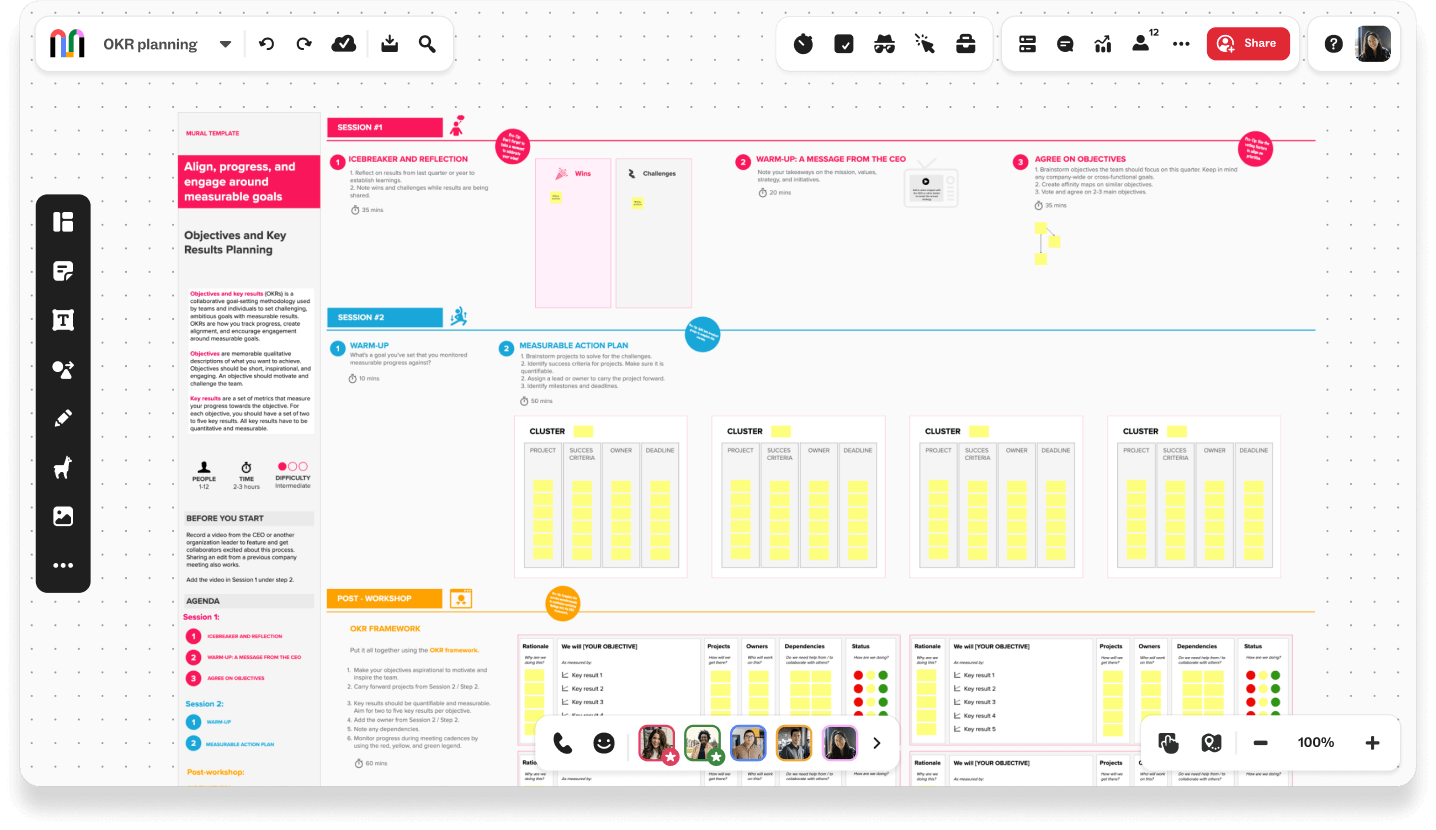Sales managers, CSMs, and AEs/AMs all need goals that drive focus, commitment, and measurable impact. Yet too often, targets are handed down from leadership, met with polite nods — and left untouched until quarter‑end. The result? Reactive firefighting instead of proactive performance.
Strong goals act like your team’s north star: they give direction, clarify expectations, and keep everyone aligned on the work that matters most.
It’s time to co‑create goals that are clear, connected to business outcomes, and reviewed regularly. The payoff? Alignment across sales and success, and the momentum to follow through on what you set.
How sales and success teams set goals that stick
When sales and customer success teams set goals together, they create a single, shared focus that drives every internal handoff, campaign strategy, and deal or retention effort. This alignment turns goal-setting from a disconnected leadership task into a collaborative plan everyone owns.
- Sales managers/team leads: Co‑creation ensures you’re aligning goals with market realities and front‑line insights.
- CSMs: Participation connects success metrics (renewals, expansion revenue) with sales quotas, keeping efforts aligned across the customer lifecycle.
- AEs/AMs: Clarity on team priorities helps focus on high‑impact accounts and cut low-value activity.
Instead of month-end surprises, you get week-by-week transparency into whether you’re on track — and the ability to adjust before problems compound.
Common roadblocks in goal setting
What are common roadblocks in goal-setting? Across roles, these challenges pop up when setting team goals:
- Unrealistic targets that drain motivation halfway through the quarter
- Vague language that leaves team members unsure what success looks like
- No clear owner, so actions fall through the cracks
- Static goals that don’t evolve when markets or priorities shift
The fix? A structured, collaborative process that makes priorities tangible and responsibilities clear.
Four steps for goals that stick
Let’s break it down. Here’s how to set goals Sales and CS teams can set internal goals that keep everyone moving in sync.
1. Clarify priorities before you set numbers
Run a visual brainstorming session in Mural using a template that inspires contribution from every role:
- Sales managers/Team leads: Territory or account focus for quota achievement, top pipeline priorities
- CSMs: Key accounts needing adoption or retention focus, post-sale expansion opportunities
- AEs/AMs: Segments with strong buying signals, stalled deals ready for re‑engagement
For example, sales manager might set “Focus on top 20 enterprise accounts for upsell” as a priority, while a CSM calls out “Reduce onboarding time from 30 to 21 days” to improve adoption and expansion potential.
Use Mural AI to clustering similar ideas into clear themes. These themes become the foundation for shared goals everyone can commit to.

Step 2: Align on measurable outcomes
Translate themes into Objectives and Key Results (OKRs) or whichever internal performance framework your team uses — using Mural’s OKR planning template to document them in real time.
Sales team member may write: “Increase proposal‑to‑close rate by 5 percentage points” directly ties sales work to revenue goals. Or a CSM may say: “Improve onboarding completion rate to 95%” supports retention and future upsell.
Collaborating on these in one session ensures the team sees how each role’s work connects to overall success.
Step 3: Map next steps and assign ownership
With goals in place, turn them into an actionable plan using Now, Next, Later, or another kanban-style board:
- Now: Complete overdue pipeline follow‑ups, address top churn‑risk accounts, run cross‑team syncs for key deals and renewals
- Next: Launch targeted campaigns for priority segments, expand usage in at‑risk accounts, refine enablement materials
- Later: Pursue new market segments, develop strategic account playbooks, plan team skill-building initiatives
Tag owners directly in Mural so accountability is visible to everyone from day one.
Step 4: Identify the key features that align with your goals
Do you need faster decisions? More creative ideas? Better teamwork across locations? Mural’s features can help you get there.
- For faster decisions, use voting and timers.
- For more creative ideas, try mind maps and templates.
- For better teamwork, use integrations and guest access.
Make it a quarterly habit
Goal setting shouldn’t be “one and done.” Build it into your quarterly rhythm for relevance and agility:
- First week: Joint session in Mural to set priorities and OKRs
- Mid-quarter: Visual progress review; adjust actions as needed
- Quarter-end: Retrospective mural capturing wins, obstacles, lessons learned
Integrating CSM health metrics, sales pipeline data, and AE activity trends mid‑quarter ensures cross-functional visibility and smarter adjustments.
Tips for high-impact sessions
In some cases, creating or having goals can pressure employees to move faster than they’d like. Here’s how to make sure everyone feels included in the goal setting process:
- Invite input early from every role, including managers, sellers, and CSMs.
- Use visuals to track progress. Charts, timelines, and radar maps keep goals clear.
- Allow for discussion. Don’t rush to final targets; refine them together.
- Document live in Mural so there’s no ambiguity afterward.
When sales managers, AEs/AMs, and CSMs co‑create their own goals, the strategy reflects real market conditions, focuses effort on high‑impact work, and aligns retention and expansion with revenue growth.
Internally, teams build stronger commitment, clearer alignment, faster course corrections, and better morale because everyone’s working toward a shared plan they helped shape.
The result: stronger commitment, clearer alignment, faster course corrections, and better morale.
Use Mural for sales and customer success goal setting
Collaborative, visual goal-setting activities with Mural aligns sales managers, CSMs, and AEs/AMs around internal priorities. Make goals visible, tie them to team outcomes, and revisit them regularly, and watch follow‑through become the norm.



.avif)

.avif)







